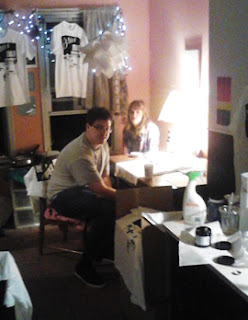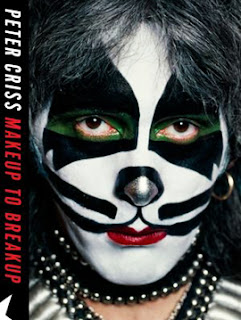Such is the painful rambling narrative.
The guitarist's troubled childhood sets the stage for a lifetime of emotional tumult and an ego besieged by polarities he accurately describes as “artistic grandiosity” and “desperately low self-regard.” He grew up in post-World Ward II London, the son of musicians/entertainers who liked to drink and often fought.
At the age of 6, he was sent to live with his grandmother, Denny. She was what he calls “a perfect wicked witch.”
Denny was mentally and physically abusive, withholding affection and often doling out beatings instead. Denny, he remembers, would often invite men (“uncles”) into her flat from the adjacent railway station and bus garage. At least one of them sexually abused Townshend.
This “uncle” would inspire the character of “wicked Uncle Ernie” in Tommy. Townshend’s 1966 mini-opera A Quick One, While He’s Away is also an account of his time with Denny.
By the time he went back to live with his parents, the damage was done.
Not everything in his childhood was bad, however. Townshend recalls with fondness his Aunt Trilby, who was the first person to encourage his musical abilities. He also shares how he first met John Entwistle and later joined Roger Daltrey’s band, The Detours.
By 1964, it was this band that evolved into The Who. And it is from this point on that he chronicles the early years of The Who. From 1967-1973, Townshend talks straight about how he helped the band achieve near-mythical status. Interestingly enough, he did this mostly without drugs and infidelity (he was married). His eye was on spiritualism instead, fueled by the Indian mystic Meher Baba.
“My spiritual longings were constantly under siege by all-too-wordly ambitions, undermined by scepticism and ambivalence, and challenged by my sexual yearnings ... I could also behave, frankly, like a complete arsehole,” writes Townshend.
While Townshend mostly avoided the pitfalls of rock and roll excess (at least at the beginning), his fellow band members did not. Moon and Entwistle in particular succumbed to the typical rock and roll lifestyle. Entwistle did drugs, and Moon drank and trashed hotel rooms. And The Who was forever banned from Holiday Inns.
Unfortunately, we never learn too much about the other band members and their relationships with one another. Even most of the people in Townshend’s life, including ex-wife Karen and his children, are merely supporting players in this story.
Townshend was without question the creative force, artistic force, and leader of The Who. Tommy was indeed inspired in part by Townshend’s angst-ridden childhood. Perhaps that is why he never truly enjoyed his fame and fortune. For him, it only fueled pressure to keep delivering the goods.
There are some problems with the book, despite some insights.
Townshend spends way too much time exploring every aspect of many of his more obscure projects as the years go on, including The Iron Man. Throughout, it’s clear that Townshend is self-consious and riddled with self-doubt about his roles as mostly absent father, unfaithful husband, one-time alcoholic, and conflicted artist.
He writes with sadness and regret about some of the tragedies that have touched his life: the 1978 death of Moon, the tragic deaths of 11 Who fans killed in a crush at Riverfront Coliseum in Cincinnati, and the shocking 2002 death of Entwistle in Las Vegas.
He also tells his side of the infamous “child porn” investigation, in which he used his credit card to pay $7 to view porn (which he immediately canceled). Although he claimed he was doing research about how banks are culpable in child pornography and his computers turned out to be clean, the scandal took its toll — a tired, sad and worn out Townshend accepted a caution and had his name placed on a sex offenders’ registry (rather than have the case drawn out at a trial).
Who I Am By Pete Townshend Rocks 5.8 On The Liquid Hip Richter Scale.
Who I Am is introspective and honest, but also reflects Townshend’s big ego. The book is rambling at times and includes far too much detail in some areas, and not enough in others. Still, Townshend is a survivor. As the lyrics say in A Quick One, “you’re all forgiven.” He could easily mean his parents, Denny, the “uncles,” and maybe himself.
Pete Townshend’s book Who I Am is available from Barnes & Noble and the memoir may be ordered through Amazon. You can also find Who I Am for iBooks or as an audiobook via iTunes. He serves as the narrator, but it comes across as him reading a manuscript as opposed to giving additional clues about himself. The runtime is almost 18 hours.
![Liquid [Hip]](https://blogger.googleusercontent.com/img/b/R29vZ2xl/AVvXsEjAFBQPqS7J0-rrttNoRYSsuwIePPZf4Nq6sqDioK1zzVQXJIQXKzq_NVNI4n6h3inuRQFBKOcJeZeSufkdHHIOxbSWyBjTjTxgKEQGyPzdwvkEEeECh4bI5YEGk4RWGUINSd7vulPQsCA/s1600-r/liquidhip.jpg)




























